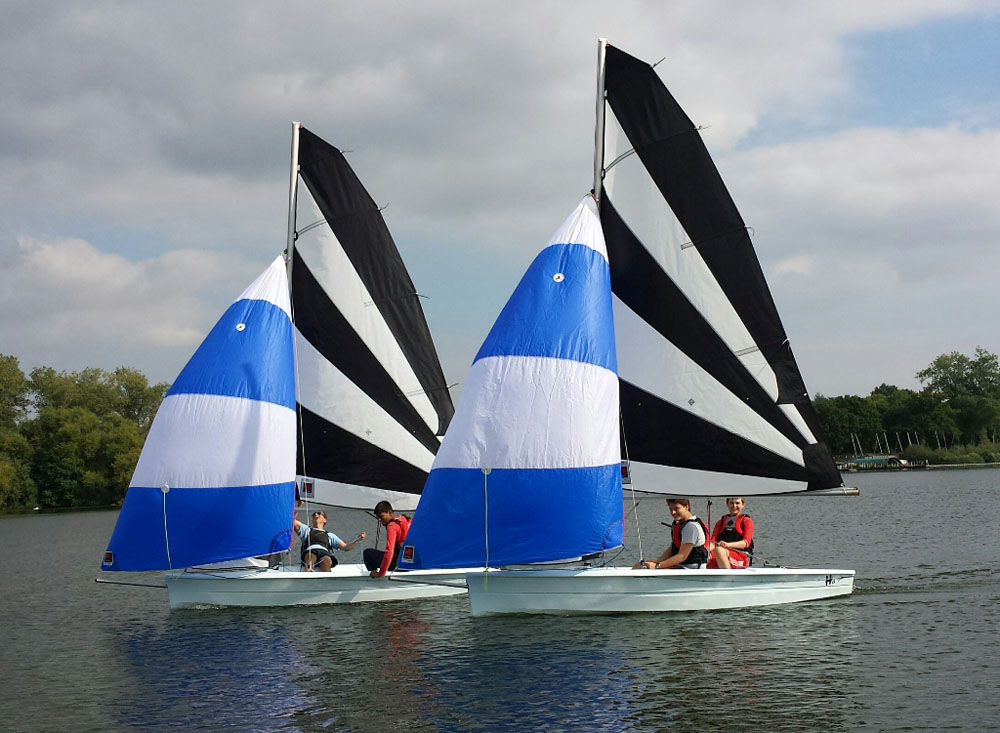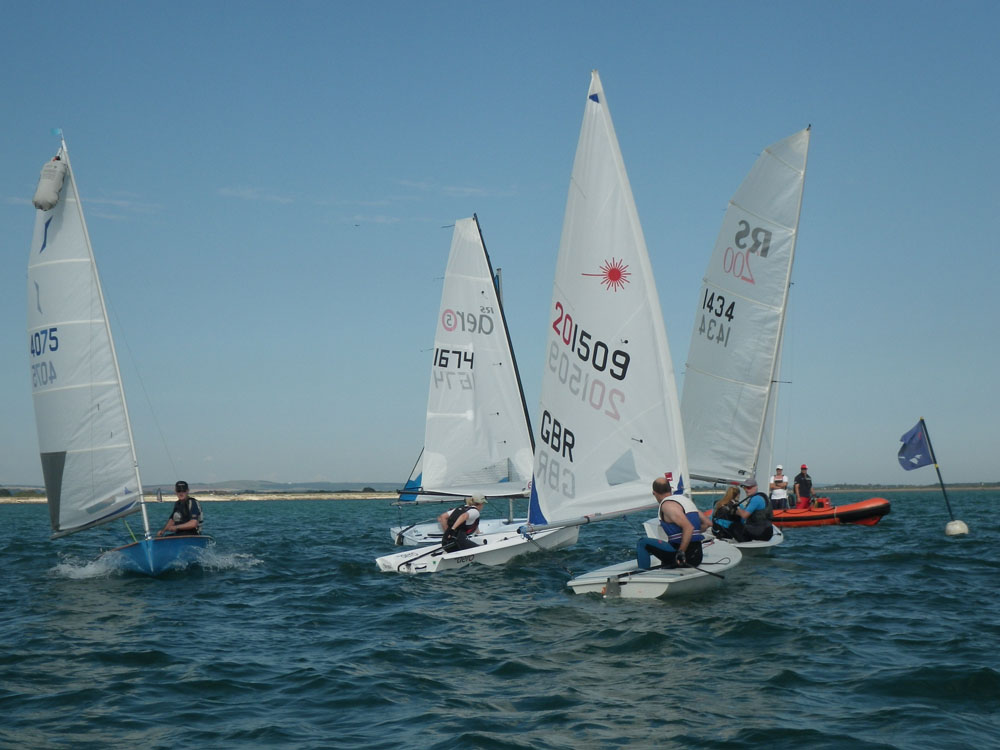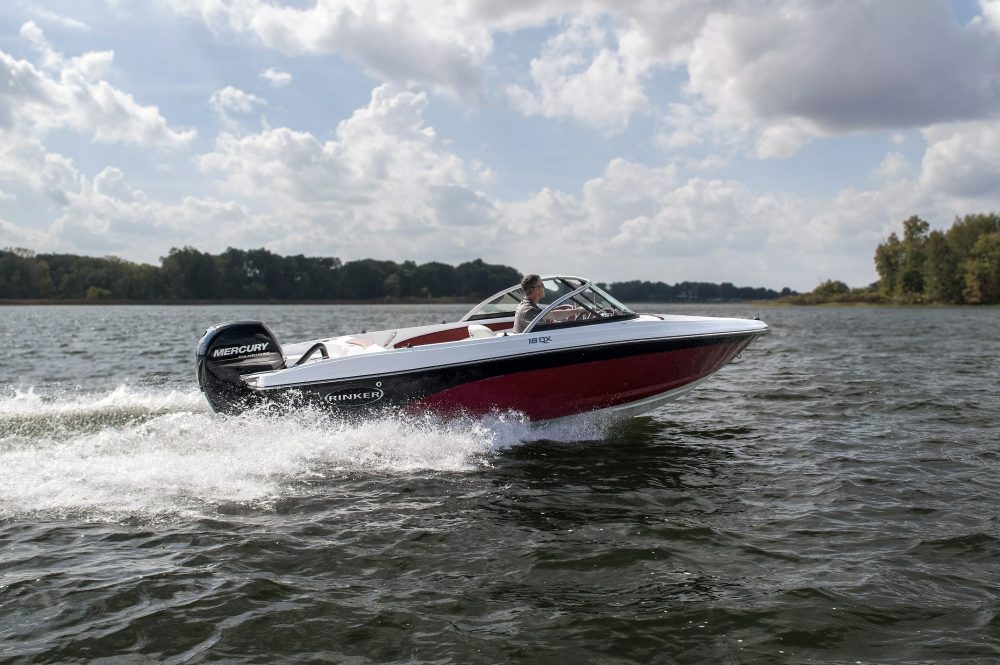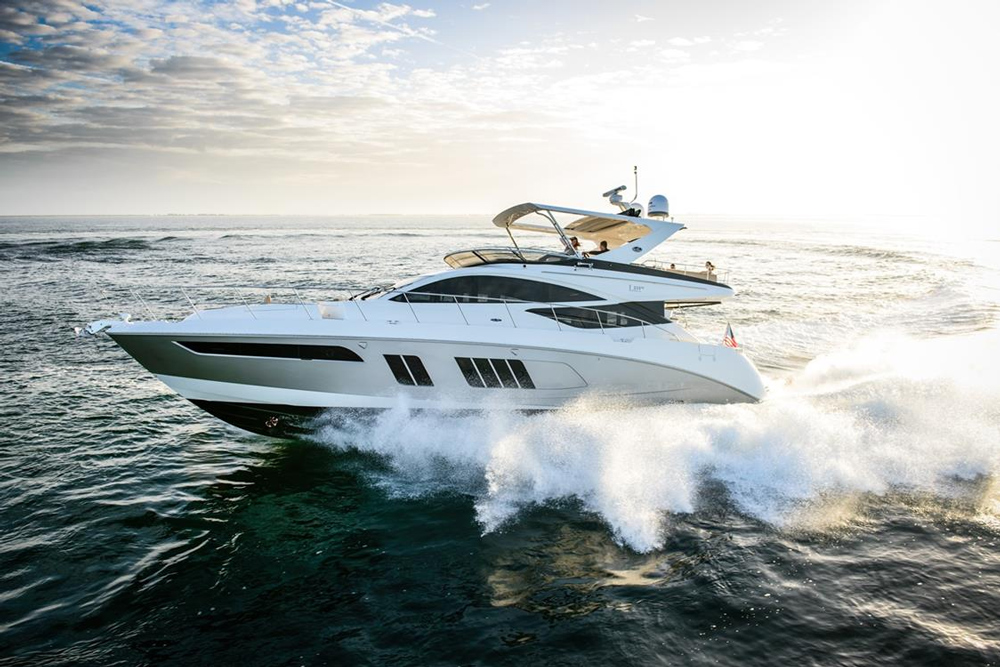25 Best Beginner Sailing Dinghies
There is a lot of choice on the dinghy sailing market, so which are the best beginner sailing dinghies? Let's take a look at your options.
After learning the ropes, the next step for new dinghy sailors is to get out on the water in a boat suitable for both having fun and honing skills. Buying the right boat will help you to develop a real love of sailing; the wrong boat will end up being a chore.
What are the best beginner sailing dinghies?
- Training boats: dinghies designed specifically for training. These are safe and simple offering stepped levels of learning.
- Singlehanders: dinghies designed to be sailed by one person. These are useful as you don't need anyone else in order to spend time afloat, and you handle every aspect of the boat yourself, which helps the learning process.
- Doublehanders: dinghies designed to be sailed by two people. Having a second person in the boat is both sociable, and gives you someone to bounce off or learn from.
- Dinghy cruising boats: dinghies designed for cruising. Ideal if you want to sail as a whole family and explore estuaries and creeks Swallows and Amazons style.
- Multihulls: dinghies with more than one hull (catamarans or trimarans). Multihulled dinghies are very stable as well fast, especially useful when learning a new skill like trapezing.
While skiffs may look exciting, for example, it’s probably best to steer well clear as a beginner unless you like swimming. Even if that’s what you ultimately want to sail, your dreams will be best served by mastering the sport first in a more forgiving boat.
Consider whether you want to sail singlehanded, doublehanded or perhaps sail with your family, and whether you’d like a boat for racing or cruising. And try to buy a boat which is sailed at your club, since this will provide a ready source of friends, help and advice.
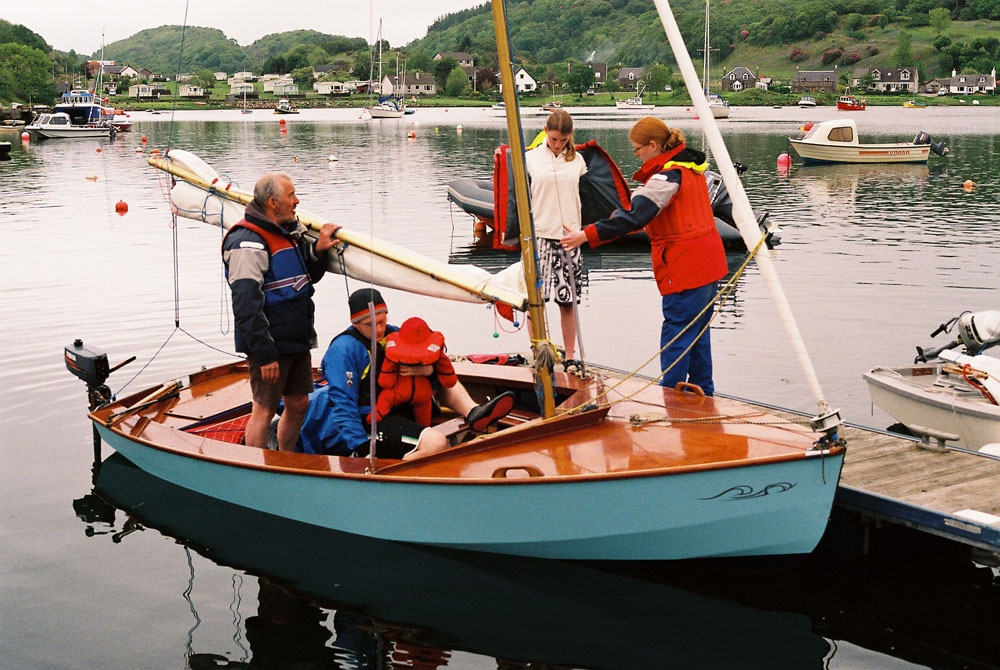
The right boat will increase your love for the sport: The Wayfarer dinghy can be raced or cruised, sailed singlehanded, doublehanded or with a whole family.
In fact, RYA instructor and racing coach Melvyn Cooper, from Hayling Island SC’s Get Racing Club for newcomers to the sport, recommends that the first thing you should look for—even before a buying boat—is a sailing club to join if you’re not already a member of one.
"To stay in the sport, is to join a sailing club," he says. "Sailing is a very sociable sport, and that’s how you stay in the sport, and you get lots of support from people as well through being in a sailing club. So I would always advocate buying a boat – when you’re in a sailing club."
"Secondly, buy a boat for the here and now – not what you think you’ll need in a year or two’s time. Also, decide whether you’re going to race it or not. And I would always encourage people to buy a boat that is well known and, if you can, a boat that’s already sailed in the club you’ve joined so you’ve got something in common."
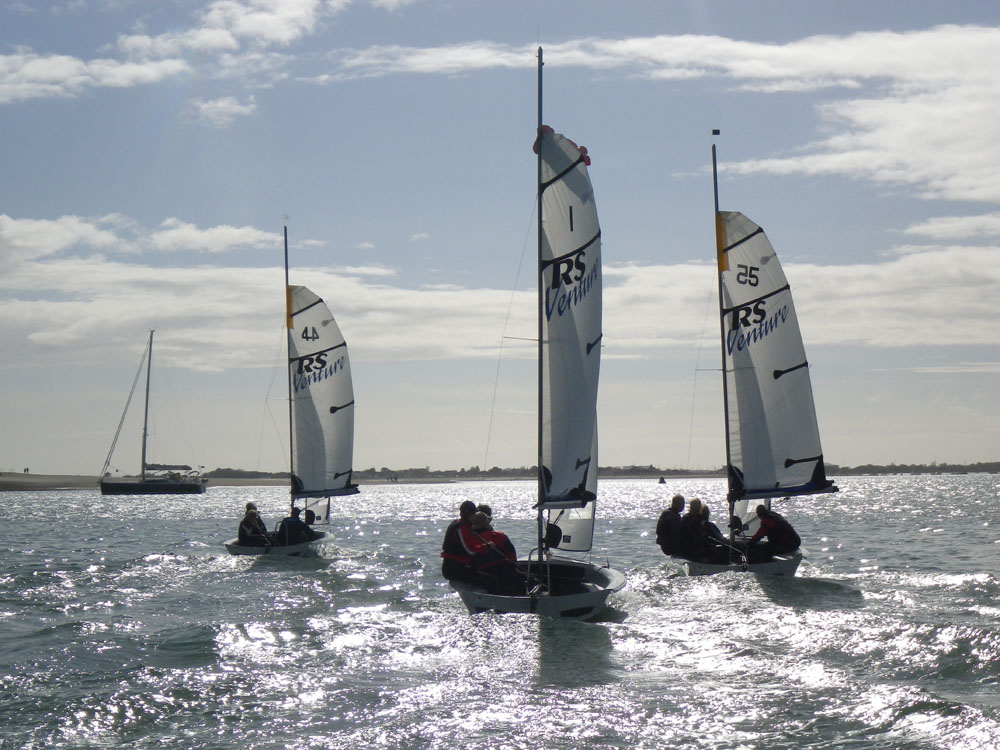
Joining like-minded people at a club and sailing similar boats is a sure way to connect with fellow sailors and get involved in the sport. Photo by Melvyn Cooper.
1. Twelve of the best training boats
Sailing schools, clubs and training centers use a variety of boats with beginners, including singlehanders such as the Pico, Hartley 10 and the RS Quba, the latter having three rigs catering from entry level to more experienced sailors.
There’s also a range of larger training dinghies from builders such as RS, Topper, Laser and Hartley Boats. Most are aimed at beginners, intermediate sailors and/or families, with various sail and trapeze options for developing skills, and they include the Laser Bahia and Laser Vago, Topper Xenon and Topper Topaz range.
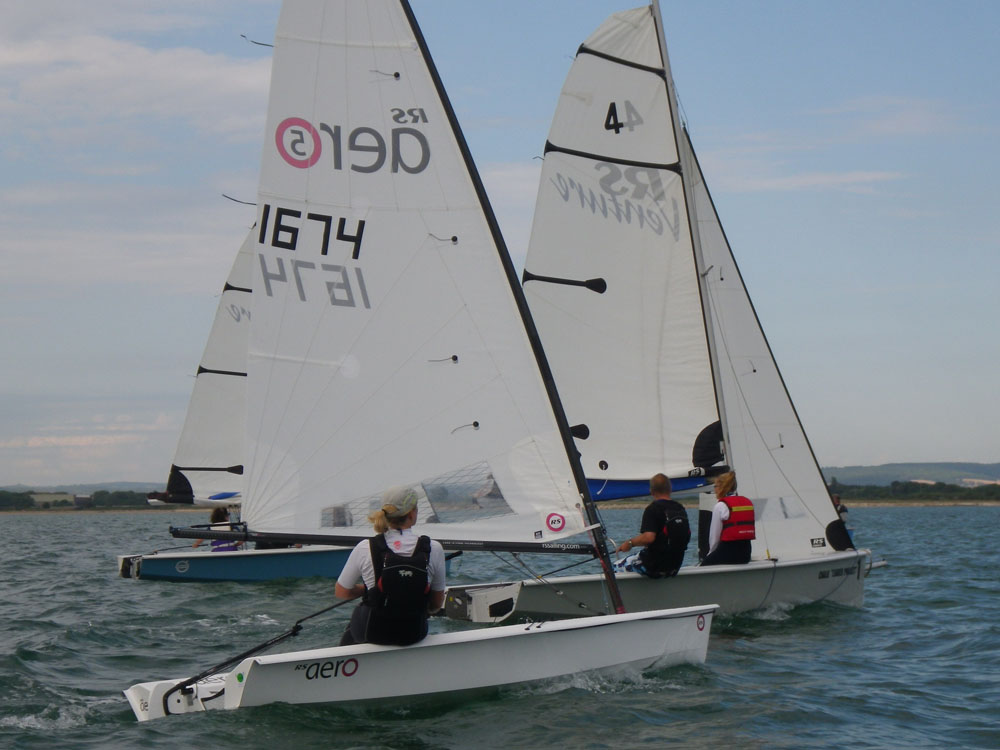
RS boats such as the Aero (foreground) and the larger Venture are well-known, popular classes that are forgiving to sail and race for beginners. Photo by Melvyn Cooper.
Typical features include tough rotomoulded construction, simple deck layout, a high boom, reefable sails, easy capsize recovery and versatility.
The RS Vision, for example, is a family sailboat designed to be a trainer, cruiser or club racer, while the RS Venture can carry up to eight sailors, and the recently launched RS Quest up to four people; all have spinnaker and trapeze options.
The Hartley 12 meanwhile has a single sail, optional jib and roomy cockpit for one, two or three people, while the H12.2 can have up to three sails, and has recently been joined by the Hartley 15 cruiser-trainer for up to five people.
2. Five of the best singlehanders
Moving on from this sector, Lasers are an ideal first singlehander; there are lots of them, making for great racing and good support for beginners. Second-hand Lasers offer good value/easy re-sale, while three rig sizes—the 4.7, Radial and Standard—span a wide age, weight and skill range from youth to Olympic.
As top Laser coach Jon Emmett sums up: ‘The beauty about the Laser is the family of rigs taking sailors from under 50kgs with the 4.7 to over 90kgs with the new Mark 2 Laser sail, all with the same hull.’
The Solo is another ubiquitous singlehander, having been designed in 1956, and like the Laser there is often a fleet at local clubs, as well as big numbers at regional and national circuit events. Although associated with older, less agile sailors, it is also raced by a younger crowd of top sailors who are only too happy to pass on their expertise.
An alternative is the RS Aero, a modern singlehander currently taking off in some numbers following its launch in 2014, which is designed to have a manageable ultra-light hull and like the Laser, has three rigs, offering a broad appeal across a wide weight and strength range of sailors, including youth sailors and women.
3. Five of the best doublehanders
When it comes to doublehanders, most have a spinnaker as well as a main and jib, but for those wanting to develop their skills and teamwork with just two sails, the long-established Enterprise is popular in some areas and has a good racing circuit.
Doublehanders with a conventional/symmetric spinnaker include dinghies like the Miracle and the GP14, while for those wanting a sporty asymmetric spinnaker there is the 2000 (formerly Laser 2000). As with all these boats, look at what is sailed locally. For example, the RS200 is considered tippier than the 2000, but if there are more at your club, the camaraderie, advice and great racing might make it worth the occasional extra capsize.
Likewise if you want the added excitement of a trapeze boat, with an acceptance that you may find it trickier, the Fireball is a good option with entry-level boats from just a few hundred pounds and flexibility to fit the boat out to suit you, making it good for smaller helms or crews. The class association describes the Fireball as "probably the highest performance dinghy that just about anyone can sail in almost any wind strength."
If you do want a more challenging first boat, consider hiring or buying a more forgiving training dinghy for a year, and taking additional RYA courses or tuition to build your spinnaker or trapezing skills, before you potentially take the plunge in more ways than one!
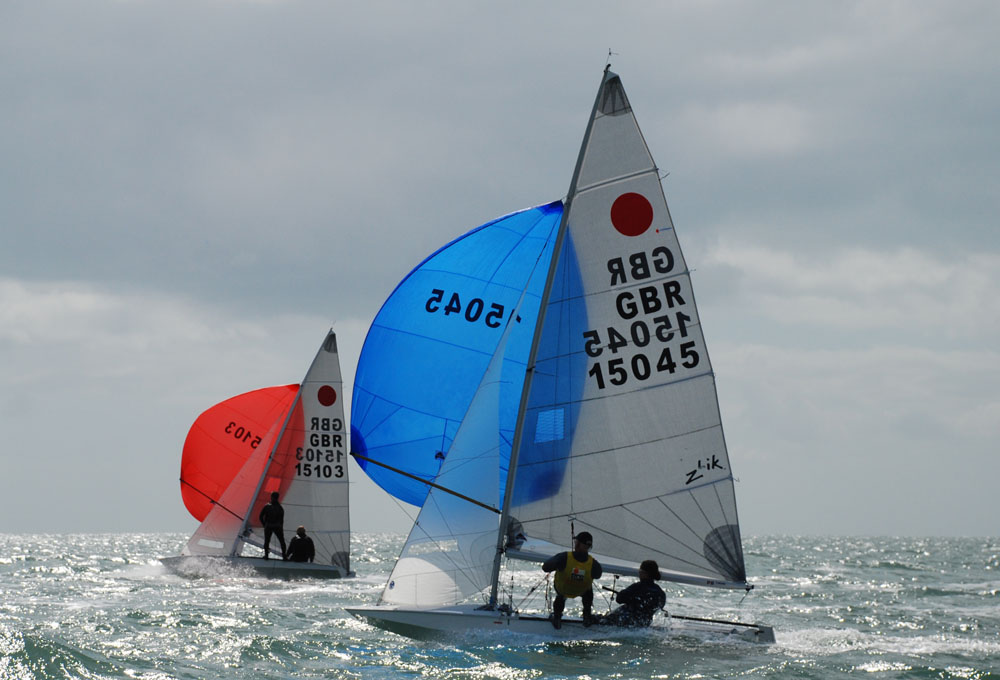
The Fireball is a three-sail trapeze dinghy that offers high performance without too steep a learning curve. Photo by Neil Robertson.
4. Three of the best dinghy cruising boats
While racing motivates many to get on the water, others prefer something more relaxed. The Wayfarer is probably one of the best known dinghies for cruising inland or on the coast and can also be used as a training boat, or raced with a spinnaker.
The GP14 can likewise be used for cruising or racing (the class held its 2016 world championship in Barbados) and has a vibrant calendar covering both aspects of the sport. Others classes to consider include the Wanderer and the smaller Gull.
You may also wish to consider a small dayboat, like the Drascombe Lugger or Salcombe Yawl.
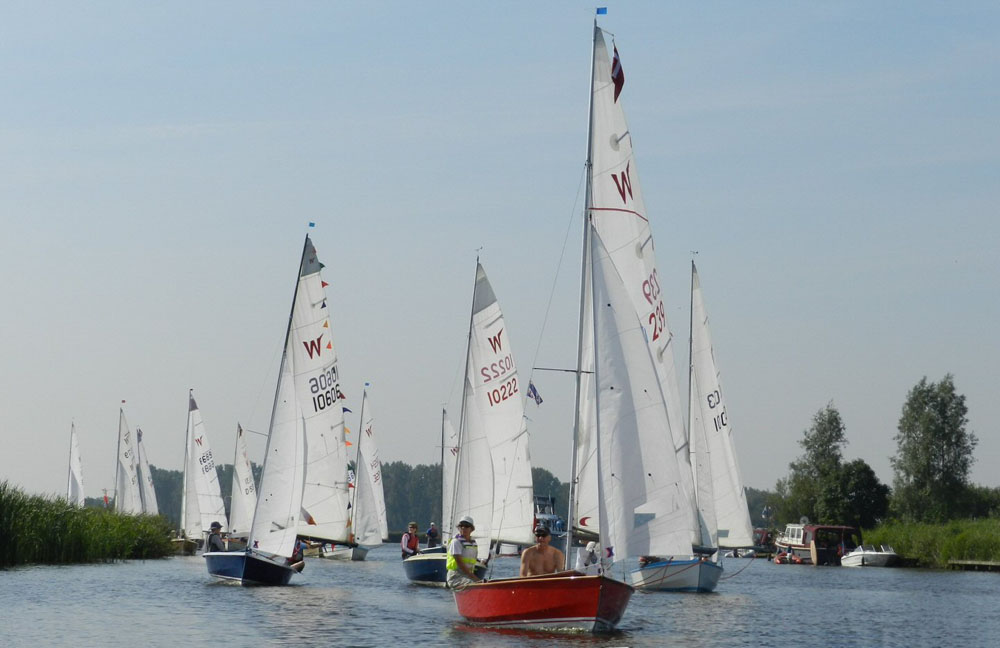
A Wayfarer rally—the cruising range of the Wayfarer dinghy might just surprise you! Photo: Wayfarer Class Association.
5. Three of the best multihull dinghies
Multihulls attract some beginners for the fact they can seem to offer a more stable platform than dinghies, but they can also be more powerful and may present more of a challenge if you do capsize.
The Sprint 15 is the largest singlehanded cat class in the UK, while a popular doublehander is the Dart 18. For disabled sailors and ‘extra-silver sailors’ who have come to the sport later in life, the Challenger trimaran offers freedom from capsizing and good racing.
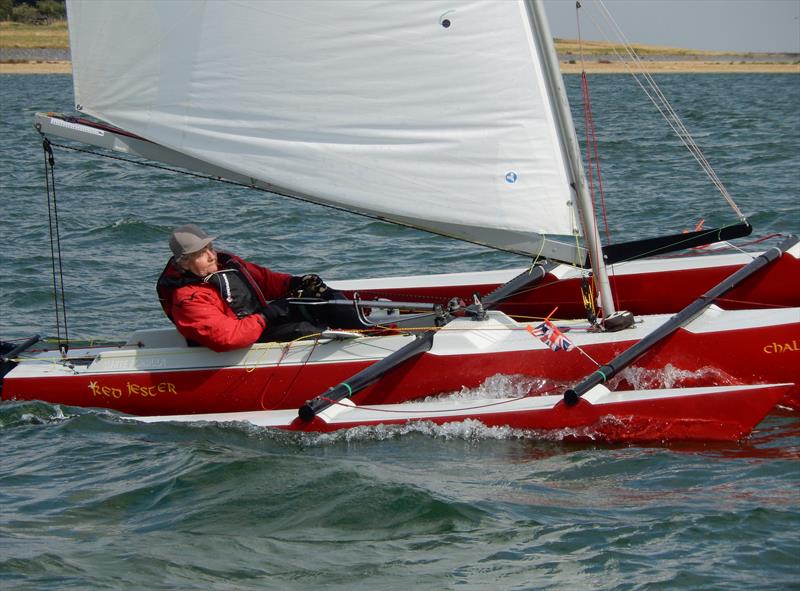
The Challenger trimaran offers high performance with no risk of capsize and a minimum of athletic ability. Photo by Richard Johnson.
Try before you buy
To maximize your chances of choosing the right boat, ask around in the dinghy park or at the club bar. You will find that many sailors will let you crew or borrow their boats to help you decide. Most clubs now have their own fleet of boats available for hire, so try these, and look out for manufacturers’ "demo days."
Boat shows are also a great way to find out more (see Boat Show Strategies: Make the Most of Your Day). There’s the Miami International Boat Show every February and the Fort Lauderdale International Boat Show in November. It’s a grand day out, and if you buy a boat, it will be first of many!
Looking to inspire your family to take up sailing? Read our Sailing Dinghies explore page and check out our feature, Get Your Family Boating in 6 Steps. You might also want to check out What is a Daysailer?, 14 great sailing dinghies for kids and Destinations for Sailing in 2018.
Editor's Note: This article originally appeared on uk.boats.com. Republished with permission.
